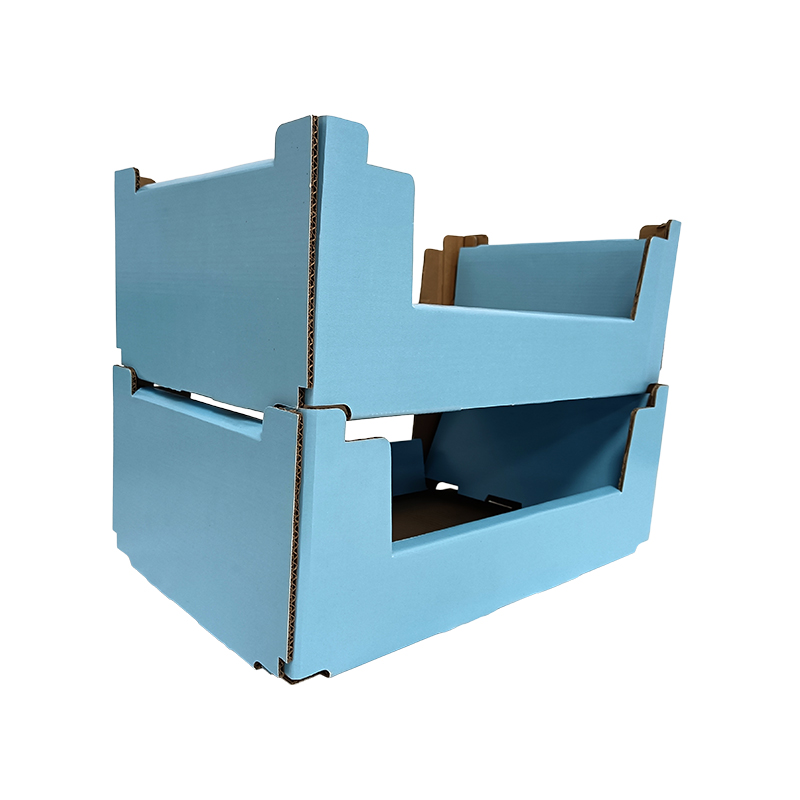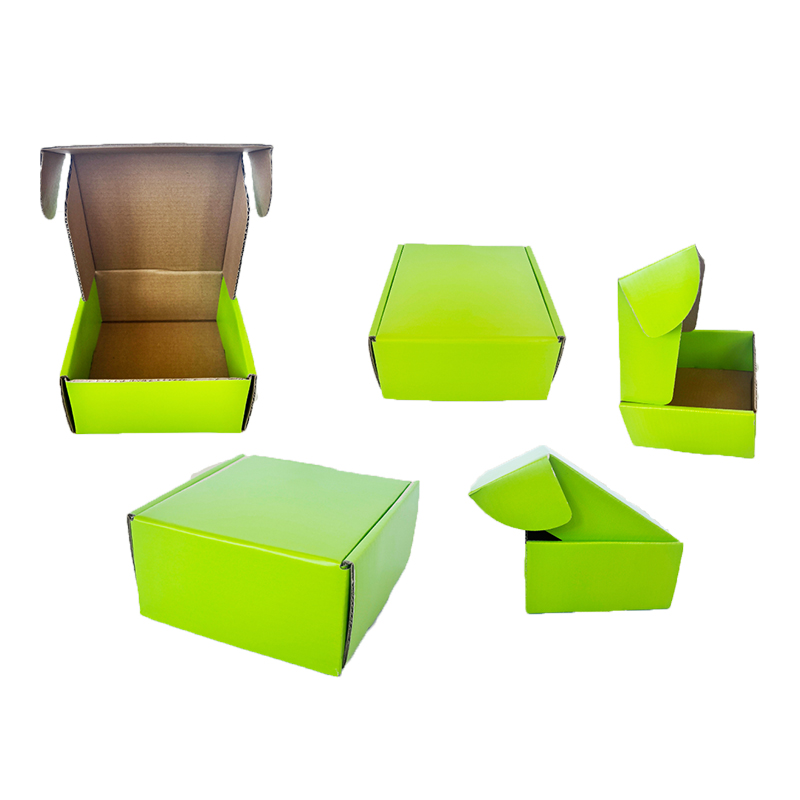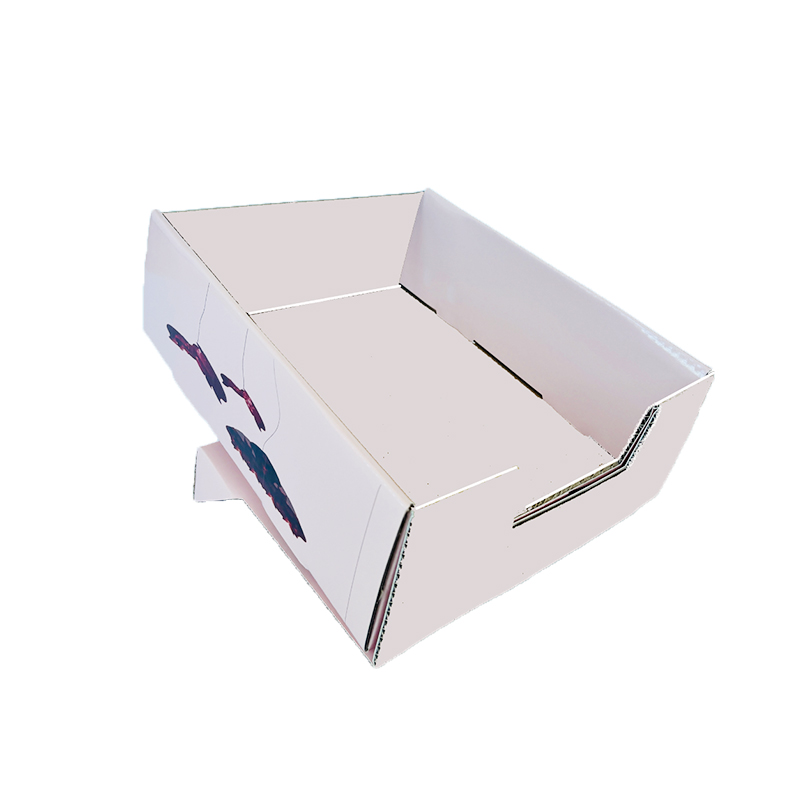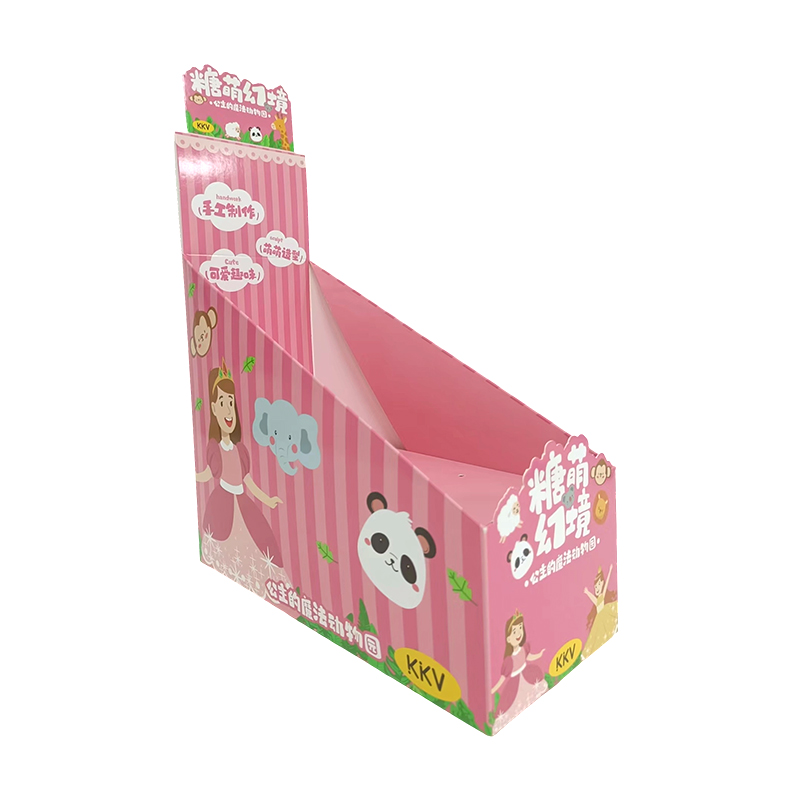For brands relying on point-of-sale (POS) presence, the structural performance of **PDQ Display Boxes Wholesale** is just as critical as the graphic design. A display that collapses, bulges, or tips over due to inadequate **Corrugated display box load capacity** will fail the entire retail campaign. Success requires an engineering focus on material specification and design testing, particularly utilizing the **BCT test for display packaging**. Suzhou New Century Color Printing Co., Ltd., a large-scale manufacturer of corrugated boxes and color printing, adheres to a quality policy of "keep improving product quality and serve customers with honesty and trustworthiness," holding certifications like ISO9000 and GMI to ensure the structural integrity of every **PDQ Display Boxes Wholesale** order.

Stackable non-slip PDQ multi-purpose display paper tray box
Foundation of Structural Strength
The strength of the display begins with the selection and specification of the corrugated material.
The role of Flute types for corrugated displays
The choice of **Flute types for corrugated displays** is the primary decision affecting strength and aesthetics. The flute, which is the wave-shaped layer between the liners, provides cushioning and compressive strength. Fine flutes (like E- or F-flute) offer a smoother surface, ideal for high-resolution graphics, but provide lower **Corrugated display box load capacity** compared to larger flutes (like B- or C-flute). Therefore, the packaging engineer must balance the printing requirements against the minimum required load-bearing strength based on the product weight.
Quantifying strength via the BCT test for display packaging
The Box Compression Test (BCT) is the definitive laboratory test used to predict the stacking strength of a container or display. The BCT value, often expressed in Newtons or pounds-force, indicates the maximum load a **PDQ Display Boxes Wholesale** can withstand before buckling. Relying solely on the ECT (Edge Crush Test) of the board is insufficient; the BCT integrates the material's crush resistance with the geometry of the final **PDQ display structural design** to provide an accurate measure of **Wholesale retail display stability** under load.
Comparison: Flute Type vs. Compression Strength and Printability:
| Flute Type |
Flute Height / Thickness |
Compression Strength (BCT) |
Printability / Graphics Quality |
| F-Flute |
Lowest (Ultra-fine) |
Low |
Excellent (Smooth surface) |
| E-Flute |
Low (Fine) |
Medium |
Very Good (Common for **PDQ Display Boxes Wholesale**) |
| C-Flute |
Highest (Coarse) |
High |
Good (More visible washboard effect) |
Engineering for Load and Stability
Structural engineering ensures the load is distributed correctly and the display remains upright.
Principles of PDQ display structural design
Effective **PDQ display structural design** focuses on reinforcing the areas of highest stress. For heavy products, the base and side walls, which function as columns supporting the load, often require double-wall or C-flute reinforcement, even if the main body uses E-flute for better printing. Internal locking tabs and strategically placed corner posts integrated into the display template are essential for transferring the load efficiently from the top of the display to the retail shelf, maximizing the **Corrugated display box load capacity**.
Calculating the Corrugated display box load capacity
The actual **Corrugated display box load capacity** in the field is typically calculated with a significant safety factor (S_{f}) applied to the BCT value to account for the rigors of handling, fluctuating humidity, and pallet stacking. Engineers use predictive formulas (like the Mckee formula) to estimate the theoretical BCT based on ECT and display dimensions, and then apply a load reduction factor (often 50% or more) to arrive at the safe, guaranteed load rating that ensures the required **Wholesale retail display stability** over the life of the retail cycle.
Ensuring Retail Performance and Durability
Performance must be maintained in the harsh realities of the retail floor.
Achieving Wholesale retail display stability
Beyond structural integrity, **Wholesale retail display stability** is a geometric concern. The ratio of the display height to its base width (footprint) is critical for preventing tipping, especially when the products are being removed. **PDQ display structural design** must place the center-of-gravity (CG) as low as possible. Rigorous tilt tests, where the display is placed on an incline, and impact tests, simulating a cart bump, are necessary to verify that the **PDQ Display Boxes Wholesale** will perform reliably in high-traffic retail aisles.
Durability against environmental stress
The ECT and BCT values of the corrugated board are highly sensitive to moisture. A 50% relative humidity change can reduce the **Corrugated display box load capacity** by over 20%. B2B suppliers must use moisture-resistant coatings or higher-grade liners (e.g., wet-strength kraft) if the displays are intended for high-humidity climates or refrigerated sections, mitigating the risk of structural failure and maintaining the integrity of the **BCT test for display packaging** results in real-world conditions.
Conclusion
Successful procurement of **PDQ Display Boxes Wholesale** is an engineering exercise. It requires specifying the correct **Flute types for corrugated displays**, demanding verified **BCT test for display packaging** data, implementing a robust **PDQ display structural design**, and confirming the **Corrugated display box load capacity** to guarantee **Wholesale retail display stability**. Suzhou New Century Color Printing Co., Ltd. is committed to this level of technical precision, adhering to our quality policy of "full participation and full process control" and utilizing our advanced facilities to deliver structurally sound, high-performance packaging solutions to high-quality customers worldwide.
Frequently Asked Questions (FAQ)
- What is the primary function of the BCT test for **PDQ Display Boxes Wholesale**? The BCT (Box Compression Test) measures the maximum compressive force a finished display can withstand before failure. It is essential for predicting stacking strength in transport and ensuring **Wholesale retail display stability** on the shelf, especially under external pressure.
- How does the choice of **Flute types for corrugated displays** affect the final graphic quality? Smaller flutes (E- and F-flute) offer a smoother, more stable surface, minimizing the "washboard effect" and allowing for higher resolution printing, which is crucial for the visual appeal of **PDQ Display Boxes Wholesale**.
- What is the typical safety factor used when calculating the final **Corrugated display box load capacity**? Engineers typically apply a safety factor (or load reduction factor) of 50% to 75% to the theoretical BCT value. This buffer accounts for environmental factors (humidity) and handling abuse, ensuring the safe **Corrugated display box load capacity** is highly reliable.
- What is the risk of using a **PDQ display structural design** without internal support for heavy products? Without internal corner posts or integrated reinforcement, the side walls bear the entire vertical load, leading to rapid fatigue failure. A properly designed **PDQ Display Boxes Wholesale** transfers load efficiently from the inner product to the base structure, extending the unit's lifespan.
- How do B2B buyers verify the structural claims related to the **BCT test for display packaging**? B2B buyers should request the supplier's material specifications, including the ECT (Edge Crush Test) value of the raw board, and the third-party laboratory report for the BCT test conducted on the final display structure. This verifies both material quality and **PDQ display structural design** integrity.


 Français
Français Español
Español عربى
عربى




